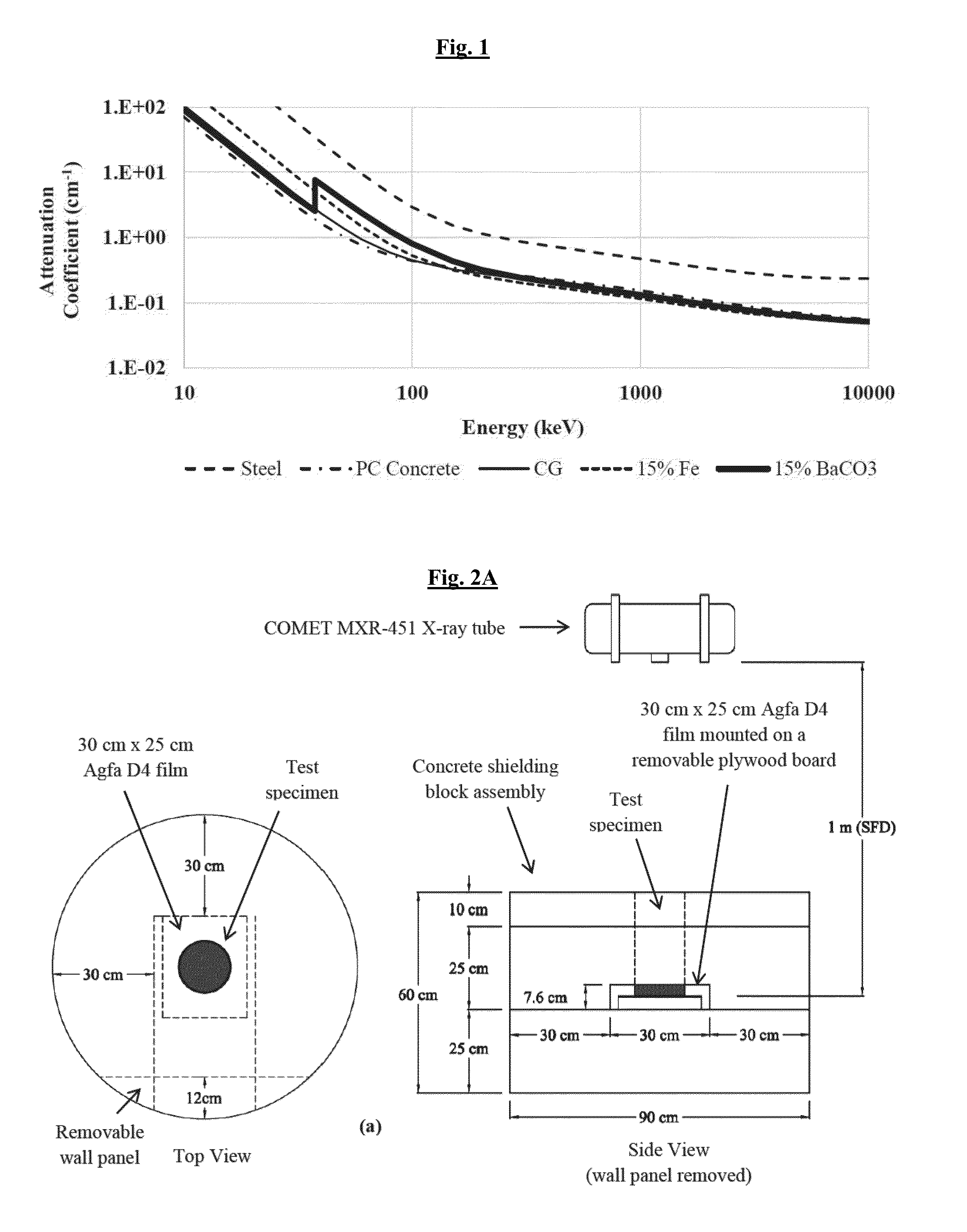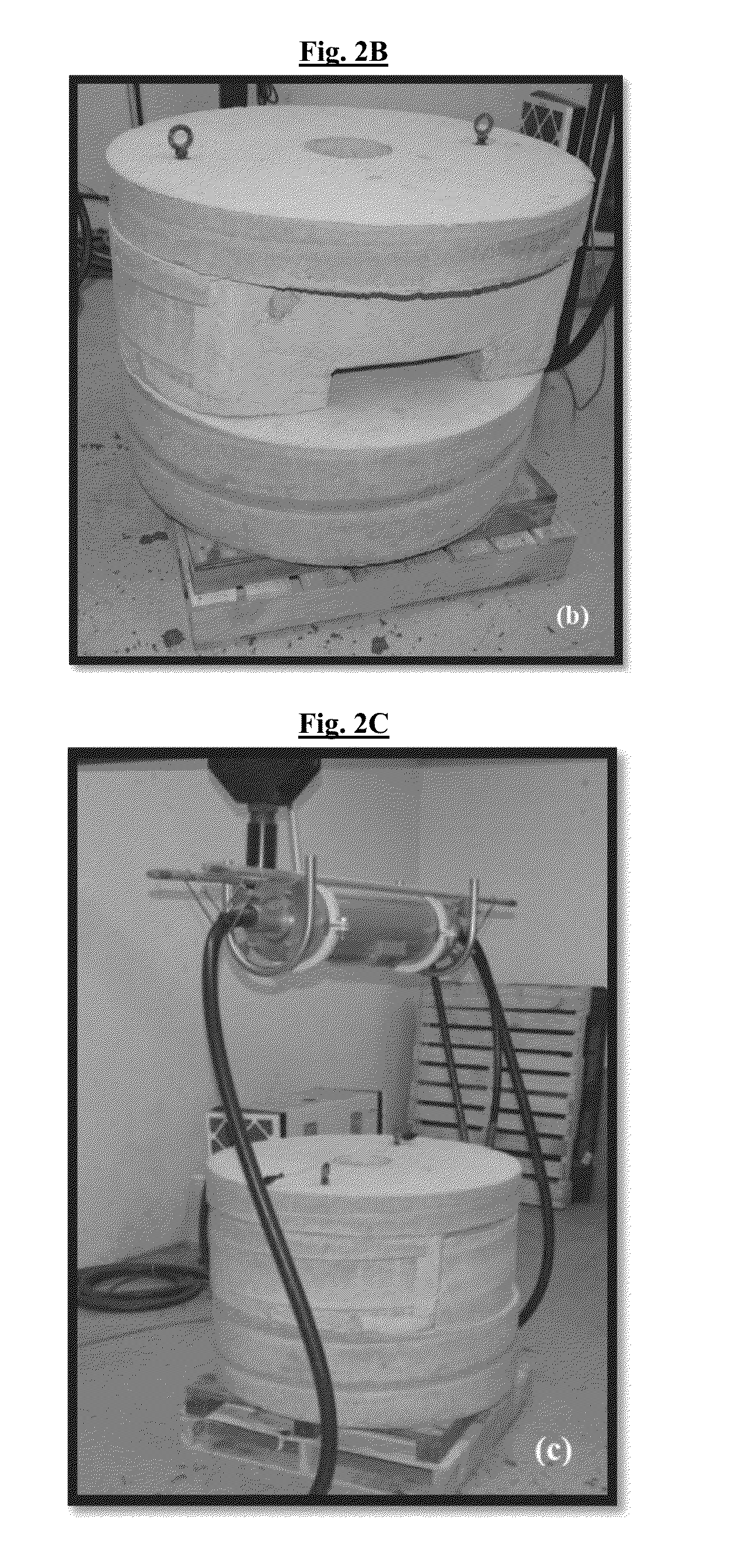Novel materials useful for radiographic imaging of construction materials and methods using same
a technology of radiographic imaging and construction materials, applied in the direction of instruments, nuclear elements, other chemical processes, etc., can solve the problems of difficult detection of small voids in thick concrete sections, low contrast ratio, and similar x-ray attenuation in cementitious grout. achieve the effect of improving the contrast-to-noise ratio
- Summary
- Abstract
- Description
- Claims
- Application Information
AI Technical Summary
Benefits of technology
Problems solved by technology
Method used
Image
Examples
example 1
Radiographic Imaging of Conventional and PAI Grout Specimens
[0088]1.1. Grout Specimens and Material Characterization
[0089]In order to generate experimental data for evaluating candidate PAI materials and concentrations, and to provide benchmark data for the validation of material models for virtual radiography simulations, cylindrical grout specimens were prepared with various weight fractions of PAI. The specimens had a nominal diameter of 15 cm and length of 30 cm. The base cementitious grout material, hereafter denoted as CG, consisted of a cementitious, non-metallic, non-shrink, fluid grout mix suitable for post-tensioning applications.
[0090]Three candidate PAI materials were investigated in the study, all in the delivery form of a fine powder: (a) iron (Fe), (b) barium carbonate (BaCO3), and (c) barium sulfate (BaSO4). For each PAI material, two concentrations (5% and 15% of the total weight) were used. The specimens were batched under controlled settings using a consistent wat...
example 2
Virtual Radiography Model
[0104]In order to evaluate the effect of the candidate PAI materials at higher energy X-ray emission levels, and to evaluate the use of PAI to detect grout void detection in post-tensioned concrete construction, virtual radiography simulations were performed using the CIVA RT software.
[0105]The software employs two computational algorithms for simulating the propagation of electromagnetic waves through homogeneous and heterogeneous materials: (1) a ray tracing model that uses the Beer-Lambert attenuation law applied along the straight line between the source and the detector, and (2) a Monte Carlo photon scattering model that accounts for Compton, Rayleigh, and photoelectric interaction, as well as pair creation. The resulting images from the companion simulations are then merged by scaling the intensity markers at each pixel in the scattered radiation image so that the total absorbed energy equals that of the ray tracing (direct attenuation) simulation.
[010...
example 3
PAI for Enhancing Grout Void Detection in Post-Tensioned Concrete Construction
[0144]3.1. Virtual Radiography Model for a Post-Tensioned Concrete Element
[0145]In order to evaluate the use of PAI materials to improve grout void detection in post-tensioned concrete construction, the validated material models from Example 2 were used to develop a virtual radiography model for a 60 cm×60 cm×30 cm thick concrete slab with an embedded post-tensioning tendon. An exemplary rendering of the model is shown in FIG. 9. The model was an idealized representation of a post-tensioned concrete bridge girder web section. The tendon was centered at mid-depth of the section and consisted of a 59 mm interior diameter corrugated polypropylene (PP) duct with a 2.5 mm wall thickness that houses seven 15 mm diameter seven-wire steel strands (idealized as straight, smooth rods). Four grout materials (CG; 5%, 15%, and 30% BaCO3) and two grout conditions (fully grouted and ungrouted ducts) were investigated in ...
PUM
| Property | Measurement | Unit |
|---|---|---|
| Fraction | aaaaa | aaaaa |
| Fraction | aaaaa | aaaaa |
| Fraction | aaaaa | aaaaa |
Abstract
Description
Claims
Application Information
 Login to View More
Login to View More - R&D
- Intellectual Property
- Life Sciences
- Materials
- Tech Scout
- Unparalleled Data Quality
- Higher Quality Content
- 60% Fewer Hallucinations
Browse by: Latest US Patents, China's latest patents, Technical Efficacy Thesaurus, Application Domain, Technology Topic, Popular Technical Reports.
© 2025 PatSnap. All rights reserved.Legal|Privacy policy|Modern Slavery Act Transparency Statement|Sitemap|About US| Contact US: help@patsnap.com



